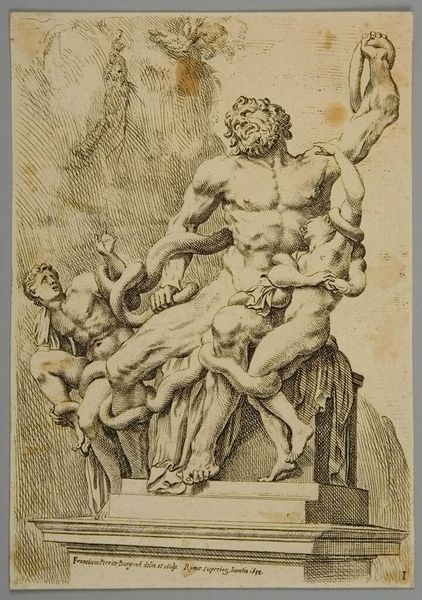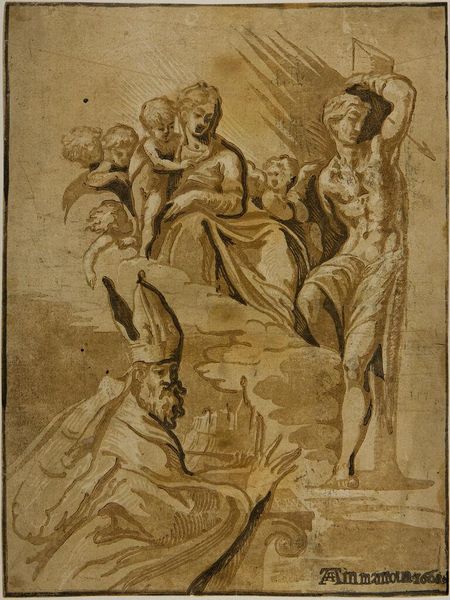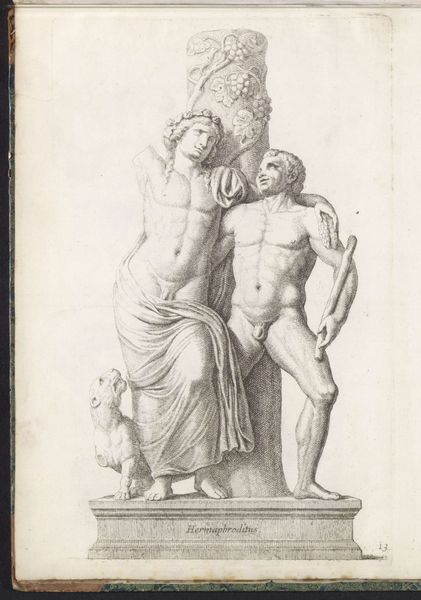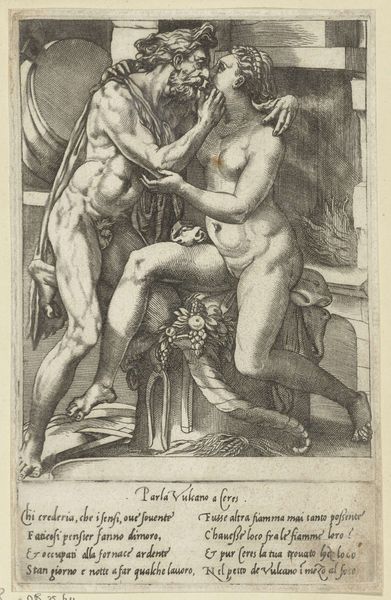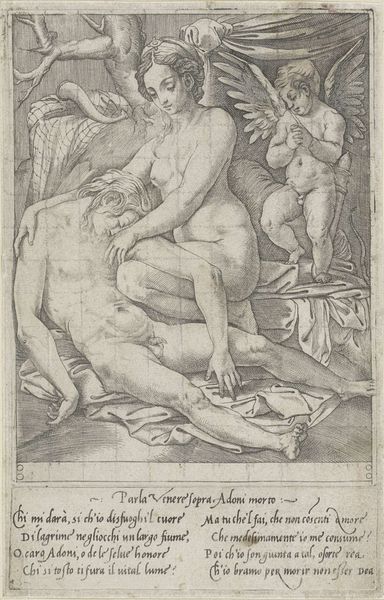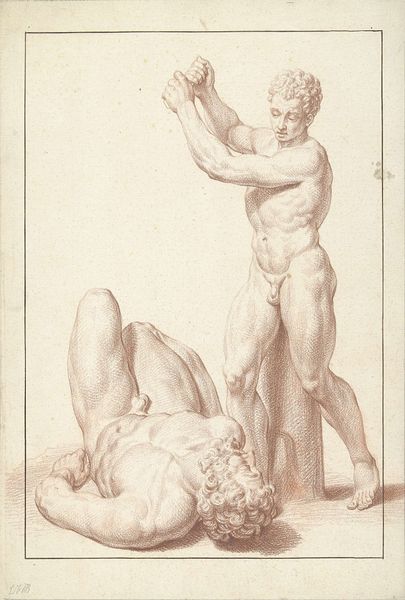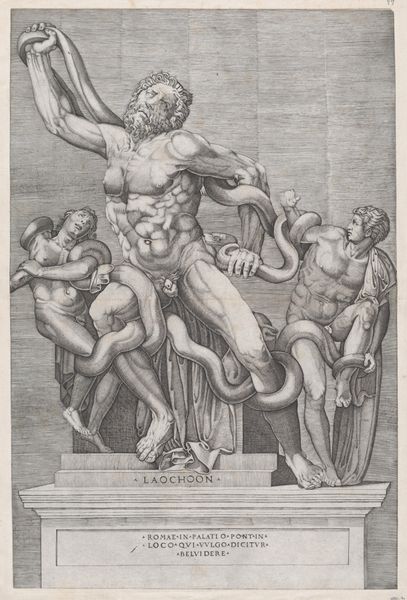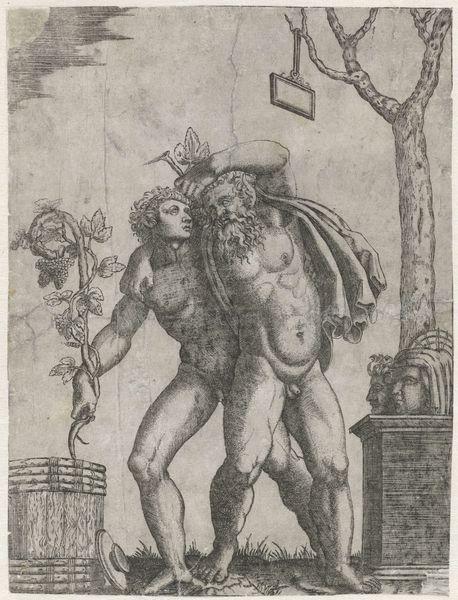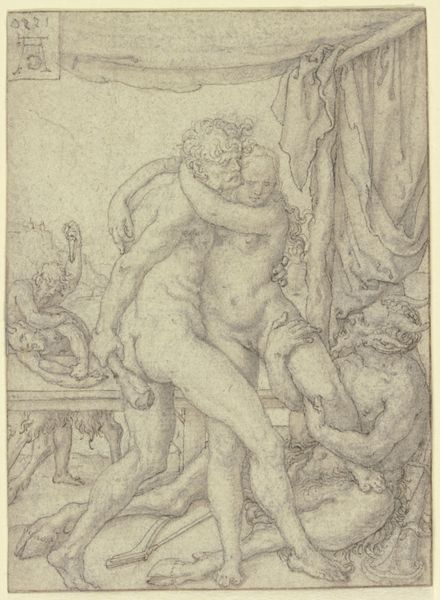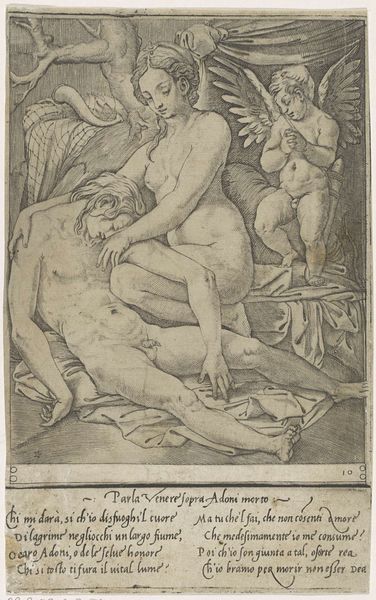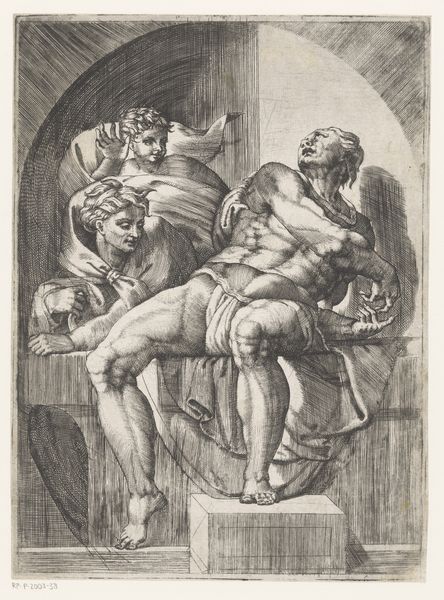
drawing, pencil
#
drawing
#
baroque
#
pencil sketch
#
figuration
#
pencil
#
portrait drawing
#
history-painting
#
academic-art
Copyright: Rijks Museum: Open Domain
Curator: Hendrick van Beaumont’s “Laocoön,” created around 1696, captures a scene of intense suffering and struggle. Editor: My first impression? The constrained palette of the pencil sketch creates a surprisingly vivid image. The figures are enveloped by the drawing itself, adding another layer to their turmoil. Curator: This piece gives insight into the role of classical sculpture in academic art of the Baroque period. It showcases a reproduction after the antique, a common practice at a time when artists turned to renowned sculptures such as the Laocoön Group for inspiration. Editor: It is quite literally process-oriented. Consider the process of the labor: The pencil itself, and the movements it must have taken Beaumont to render such a three-dimensional sculpture onto paper. What sort of conditions do you imagine Beaumont had while creating this drawing? Curator: Artists creating similar work were supported by court patronage and an increasing demand for "history painting," often acting as a propagandistic form of expression. The sculpture itself gained prominence, and reproductions were commissioned throughout Europe as symbols of erudition and cultural power. Editor: There is definitely a hierarchy represented here. We are observing not just a painful story rendered, but how Beaumont chose to depict stone. Can you imagine the real work? How much did the source work depend on skilled labor, raw materials, and market forces? Curator: I'm struck by the dramatic composition of Beaumont's work, its capacity to convey pain and movement despite the stillness of the medium. The cultural perception of "Laocoön" reflects not only an artistic trend but the consolidation of artistic norms that were valued at the time, as well as still today in contemporary art. Editor: And there’s that term—"cultural value.” Where do we place it today? The question is this: as art continues to emerge, should the value of classical art change based on production, making, and consumption practices? Curator: It really urges one to contemplate the enduring appeal of classical stories. Thank you for this refreshing conversation. Editor: It certainly offers plenty to ponder from a material perspective. I think it is definitely time to examine this piece more thoroughly, on our own.
Comments
No comments
Be the first to comment and join the conversation on the ultimate creative platform.
